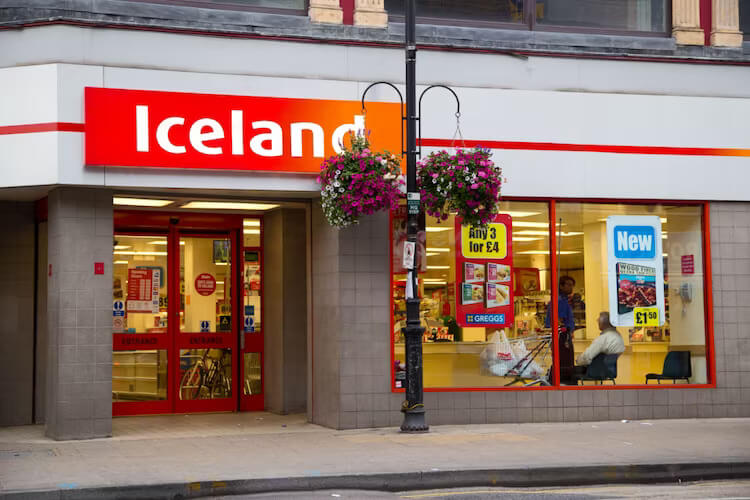Frozen aspirations
If there is one word you are guaranteed to hear in a mass-market brand workshop, it is ‘aspirational’. Never mind that the sector might be everyday shower gels, basic cooking oils or entry-level tablet computers, the marketing team will assure you that theirs is an aspirational brand.
The word is so expected as to almost go unchallenged. You’re tempted to nod it through, as though it’s a natural fit in a quotidian brand. But there’s nothing like unthinking acquiescence to prompt the more sceptical to actually stop and think.
What does it really mean, this aspirational quality? And who or what is it describing?
The ingoing assumption is that it’s the target consumer doing the aspiring – wanting betterment in their lives and futures, and willing to countenance the upgrade to a slightly better class of product or service as an expression of that desire.
But the more I work with brands in these routine consumption segments, the more I sense that it is the marketers who are given to aspiration – nursing their own yearnings to be free from the gravitational realities of the category and seeking to pull consumers upwards with them, to more refined, and more profitable, transactional strata. A nicer-smelling shower gel, a herb-infused cooking oil, a more sophisticated tablet.
It’s a reasonable play. Some of those consumers will be tempted by – and enjoy – the small touches of quality and the enhanced brand meaning that accompanies them, and will be willing to pay the premium.
But some won’t. Or can’t. And for a very blunt reason: they are people at the lower end of the income spectrum – in the bottom quintile for earnings, with less than £14,600 disposable income by household per year, according to 2022 ONS data. When money is that tight, inflation is a miserable blow. Many will be private renters, with typically over 40% of income going out just to pay the rent – a statistic not mentioned in all those reports about the more middle-class concerns of mortgage repayments.
This is a tough cohort for marketers to understand and take seriously, especially by those for whom upscale branding is the default way of doing things. Two mistakes are made. The first is to write off the aspirations of this seemingly inert and unpromising group – as though to be unable to afford is the same as to be indifferent to improvement. Of course this cohort seeks betterment in life; it is a human universal. The problem is that aspiration leans into tomorrow, for a cohort that is obliged to focus on today.
And that is the second thing that marketers fail to properly appreciate: the sheer immediacy that accompanies lives and decisions at this more constrained end of things. Even something so simple as a loyalty scheme, which could help people save money in the medium term, is just too slow to do much good when your challenges are right here, staring you in the face.
Some brands get this lower-income cohort and get the tension between immediate exigencies and deferred aspirations and find imaginative ways to help. Right now, discount grocery retailer Iceland is an instructive example.

At the most fundamental level, the brand is aggressive on pricing. It has frozen the price of hundreds of products to £1 – a totemic move by a team that knows that one of the brand’s natural competitors is the local food bank.
Pensioners are overrepresented in the low-income bracket and Iceland’s response is to offer over-60s a 10% discount on Tuesdays.
But it’s the brand’s interest-free customer loans of up to £100 that really mark the understanding of the realities of low-budget living, with the ever-present chance that people can get ‘a bit short’ towards the end of the week. Payday loan companies understood this, too, but chose to hit borrowers with stratospheric APRs.
On the aspirational front, the brand is not without its culinary flourishes: raw shelled king prawns, vegan mushroom ribeye steaks, deli special French torchon ham. And it has had luck on its side of late, with the destigmatisation of frozen food and its growing acceptance by celebrity chefs.
Playing into higher-level consumer aspirations for a better world, Iceland has long been a sustainability pioneer. It was the first UK supermarket to remove palm oil from its own-label range, and the first to trial the complete removal of plastic bags from its stores. Executive chairman Richard Walker has made a point of declaring that ‘green’ values should be accessible to all – not just a privilege of those who can afford to shop in upmarket stores.
Many marketers spend whole careers without engaging with this bottom-end consumer stratum. When I ask the MBA classes that I teach on brand management what sectors they are attracted to work in, the answers round on just two: luxury and tech. There’s never anyone there who thinks it might be an interesting challenge to manage a brand like Iceland.
But while low-income markets might not offer the fancy margins, they compensate with the promise of scale. The numbers are there, the volume is there – and, with inflation still to be tamed and real incomes falling, you could argue that this is a cohort with natural growth potential.
Any marketer venturing into the low-income consumer arena for the first time would do well to remember the basics. Get some real understanding of what’s going on in these people’s lives and be respectful, always. And with those fundamentals met, seek to find imaginative but realistic ways to make those lives better.
There are rewards for getting it right. Iceland’s latest results show a sales increase of 6.9% to just under £4bn with forecast record profit of over £175m. Could your current brand aspire to that?
